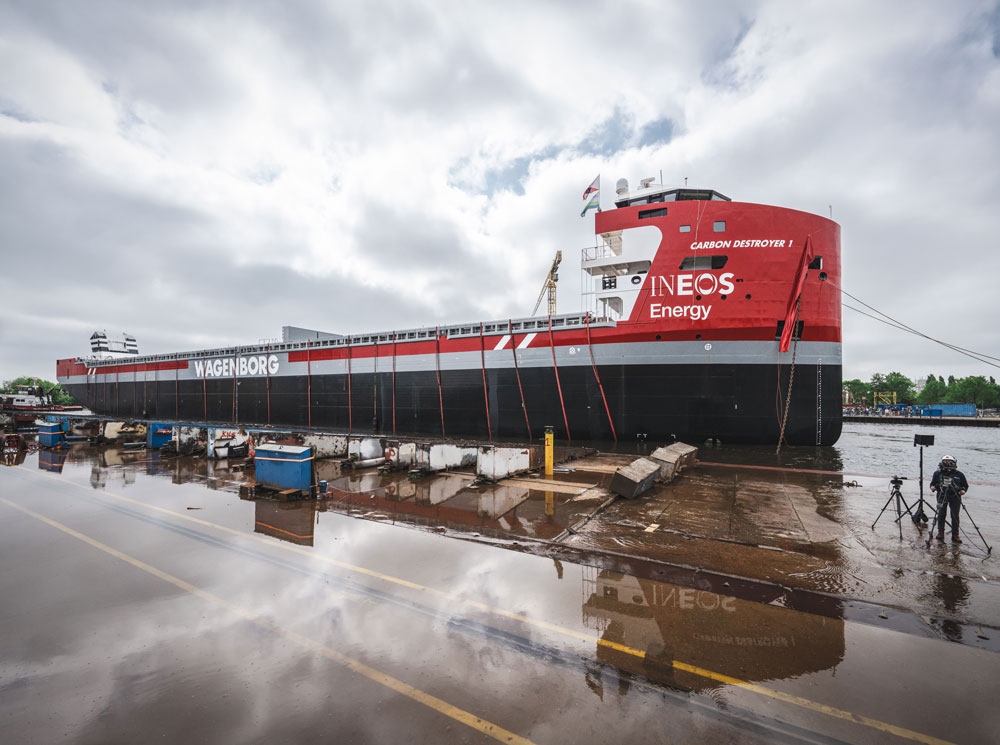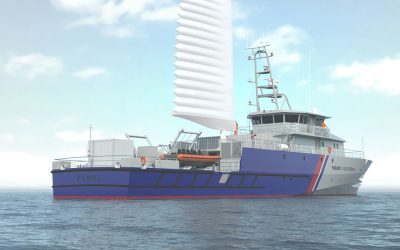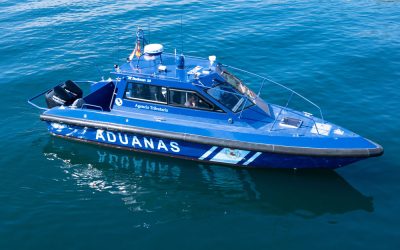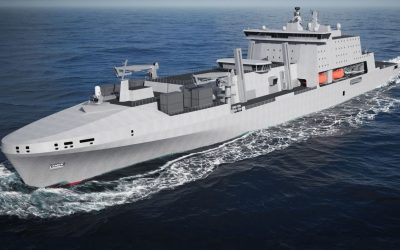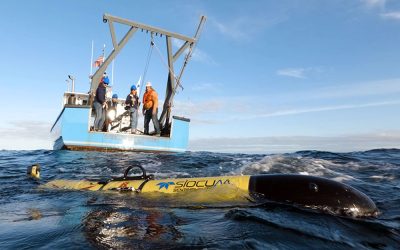Dutch shipyard Royal Niestern Sander has launched Carbon Destroyer 1, the first CO2 carrier to be built in Europe. The vessel is a key part of the Project Greensand carbon capture and storage project in Denmark and was described by Sir Jim Ratcliffe, chairman of global petrochemicals company INEOS, as “an important next step for carbon capture and storage in Europe…demonstrating that carbon storage is commercially viable”.
Carbon Destroyer 1 is based on Wagenborg’s EasyMax design and has been specially adapted for handling CO2 under pressure and at low temperatures. The EasyMax concept is a multipurpose vessel with a cargo capacity of 14,000tonnes, jointly developed by Royal Wagenborg and Royal Niestern Sander.
Through Project Greensand, Denmark is positioning itself as a hub for CO2 storage in Europe. Carbon Destroyer 1’s role will be to connect CO2 emitters with permanent, commercial-scale offshore CO2 storage. The vessel will transport captured CO2 from across Europe, creating a ‘virtual pipeline’ between the point of capture and permanent storage deep beneath the seabed in the North Sea. The carrier will sail regular routes from Port Esbjerg to the Nini West platform, where the CO2 will be injected for safe and permanent storage to the Nini reservoir, approximately 1,800m beneath the seabed in geological formations that have contained hydrocarbons for millions of years.
The vessel’s launch follows a series of major developments in the Greensand project. In December 2024, INEOS and its partners Harbour Energy and Nordsøfonden took a final investment decision to move ahead with full-scale CO2 storage operations in the Nini Field. The project’s initial phase targets the permanent storage of 400,000tonnes of CO2 annually, with the potential to scale up to 8 million tonnes per year by 2030. The vessel is expected to be fully operational by the end of 2025 or early 2026, when Project Greensand is due to begin permanent commercial scale CO2 storage operations.
At the Port of Esbjerg in Denmark, construction is currently underway on a new CO2 terminal, which will serve as the onshore hub for receiving, storing, and loading liquefied CO2 onto the vessel. Once established, the terminal will include six large storage tanks and essential infrastructure to support continuous and scalable CO2 transport to the offshore storage site.
